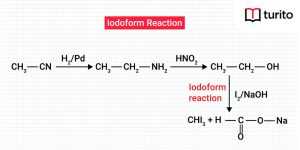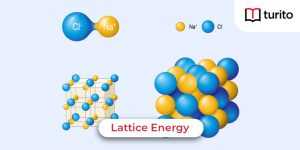Quantum Numbers
An atom can consist of a large number of orbitals. Based on the quantity, these orbitals can be differentiated by their shape, size, and direction of the electron or their spin, i.e., orientation.
The smaller the size of an orbital, the more the chances of finding the electrons near the nucleus. Likewise, the shape and orientation of an atom inform the probability of locating the electron in a fixed direction more than others. Atomic orbitals are accurately distinguished by some numbers, which are called quantum numbers.
This article will inform you about quantum numbers and how to calculate them.
Quantum Numbers and Their Types
Quantum numbers are the integral numbers used to describe the precise information of an electron in an atom. Simply put, quantum numbers are used to explain the correct address of an electron.
A quantum number narrates
- The energy of an electron in orbit.
- The position or distance of an electron from the nucleus.
- The shape and number of orientations of an electron cloud around its axis.
- The direction of the spinning of the electron around its axis.
These are the four quantum numbers, i.e., principal quantum number (n), magnetic quantum number (m), azimuthal quantum number (l), and spin quantum number (s). Therefore, it can say that to describe an electron in an atom completely, four quantum numbers are required.
Principal Quantum Number (n)
The principal quantum number gives the following information:
- It determines the energy of an electron and the average distance of an electron from the nucleus. The principal quantum number tells the principal energy level of the electron. It can have any whole number value such as 1, 2, 3, 4, etc.
- The energy levels or shells corresponding to these numbers are designated as K, L, M, N, etc. As the value of n increases, the electron gets farther from the nucleus, increasing its energy. The higher the value of n, the higher the electronic energy of the electron. Therefore, it is less tightly held with the nucleus.
- The energy of the electron in a hydrogen atom is related to the principal quantum number by the following relation:
Eₙ = – k² [2𝜋²me⁴Z²] / [n² h²]
Where m = mass of an electron
e = charge on electron
h = Planck’s Constant
Eₙ = energy of the electron in nth principle shell in Joule
n = Principal quantum number used to designate the principal shell
k = Coulomb’s law constant
This relation is similar to the expression given by Bohr.
The principal quantum number, n, also gives the maximum number of electrons that may accommodate a given shell. The maximum number of electrons in the nth shell = 2n².
Azimuthal Quantum Number (l)
This quantum number is also called the angular quantum number. It decides the angular momentum of an electron and is denoted by l. The value of l gives the sublevel or subshell in which the electron is located.
This quantum number also decides the shape of the orbital in which the electron is located. The number of subshells with a principal shell is determined by the value of n for that principal energy level. Therefore, l may have all possible whole number values from 0 to (n – 1) for each principal energy level.
This quantum number directs the magnitude of the orbital angular momentum. Therefore, it is also called orbital angular momentum quantum number. The maximum number of electrons that may accommodate a given subshell equals 2(2l + 1).
Azimuthal quantum number rules:
- For n = 1, l will be 0. It means that an electron in the first energy level can be present only in an s -shell. So, the first energy level has solely one subshell, i.e., 1s. It is spherical.
- For n = 2, l will have values 0 and 1. It means that the electron in the second principal energy level may be either in a spherical s-subshell or p-subshell. So, the second energy level has only two subshells, i.e., 2s & 2p. The p-subshells are dumb-bell.
- For n = 3, l can have values 0, 1, and 2. An electron in the third principal energy level may either be in the s-subshell or p-subshell. So the third energy level has three subshells that are 3s, 3p, & 3d. The d-subshells are leaf-like.
Similarly, the fourth energy level can have four subshells, i.e., 4s, 4p, 4d, & 4f.
The relation between orbital angular momentum and azimuthal quantum number, l is
Orbital angular momentum = [h/ 2𝜋] √[l (l + 1)]
Magnetic Quantum Number (mₗ)
This quantum number refers to the different orientations of the electron cloud in a particular subshell. In other words, the direction of the angular momentum is determined by the magnetic quantum number (mₗ).
The number of orbitals in a specific subshell within a principal energy level is stated by the number of values sanctioned to mₗ, which in turn hangs on the values of l. The possible values of mₗ range +l to -l, including 0 values. The total number of mₗ values gives the total number of orbitals within a given subshell.
Magnetic quantum number rules:
- For l = 0, i.e., s-subshell, mₗ = 0. Therefore, the s-subshell consists solely of one orbital.
- For l = 1, i.e., p-subshell, mₗ can be -1, 0, and +1. Therefore, the p-subshell consists of three orbitals.
- For l = 2, i.e., d-subshell, mₗ can be -2, -1, 0, +1, and +2. Therefore, the d-subshell consists of five orbitals.
- For l = 3, i.e., f-subshell, mₗ can be -3, -2, -1, 0, +1, +2, and +3. Therefore, the f-subshell consists of seven orbitals.
Spin Quantum Number (mₛ)
This quantum number is denoted by mₛ. It does not arise from the mechanical wave treatment but the spectral proof that an electron, in addition to its revolving motion about the nucleus, also spins about its axis.
The spin quantum number tells the direction of spin of the electron. The spin can either be anticlockwise or clockwise. The spin quantum number can have only two values which are +1/2 and -1/2. If the positive value indicates clockwise spin, i.e. ↑, upward arrow, and is known as 𝛼-spin. The negative value indicates anti-clockwise spin, i.e. ↓, downward arrow, known as 𝛽-spin.
Quantum Numbers Chart
The relationship between all quantum numbers is represented with the help of a quantum numbers chart.
|
n | l | mₗ | mₛ | Number of Orbitals | Orbital Name | Number of Electrons |
Total Electrons |
|
(K shell) | 0 | 0 | +½, -½ | 1 |
1s | 2 |
2 |
|
(L shell) | 0 | 0 | +½, -½ | 1 | 2s | 2 |
8 |
|
1 | -1, 0, +1 | +½, -½ | 3 | 2p |
6 | ||
|
(M shell) | 0 | 0 | +½, -½ | 1 | 3s | 2 |
18 |
|
| 1 | -1, 0, +1 | +½, -½ | 3 | 3p |
6 | |
| 2 | -2, -1, 0, +1, +2 | +½, -½ | 5 | 3d |
10 |
Information Provided by Four Quantum Numbers
The four quantum numbers give the following information :
- n defines the shell number and determines the size of the orbital and the orbital’s energy to a large extent.
- There are many subshells in the nth shell. In which subshell the electron lies and decides the shape of the orbital is pointed out by l. There are (2l+1) types of orbitals in a subshell, i.e., the value of l for a one s orbital is 0, for three p orbitals is 1, and for five d orbitals is 2 per subshell. To some limit, l also decides the energy of the orbital in a numerous electrons atom.
- mₗ appoints the orientation of the orbital. For a given value of l, mₗ has (2l+1) values, the same as the orbitals’ number per subshell. It suggested that the orbitals’ number equals a lot of ways in which they are positioned.
- mₛ refers to the orientation of the spin of the electron.
Conclusion
From the above discussion, it is concluded that four types of quantum numbers allocate the position of an electron in an atom. When the Schrodinger wave equation is calculated for the wave function, 𝛹, the values of three quantum numbers, i.e., n, l, and m, become easy to calculate. Spin quantum number (s) arise due to the electron’s spinning about its axis.
With the help of a quantum numbers chart, you can understand the values of all quantum numbers and memorize them most simply.
Frequently Asked Questions
1. Why is it impracticable to get a principal quantum number as zero or a negative value?
The principal quantum number describes an electron’s electron shell or energy level. It is not feasible for an electron to possess the value of the principal quantum number, n, as zero or a negative value. It is because an atom can’t have a negative value or no value for a principal shell.
2. What are the assigned values of all the four quantum numbers?
The assigned values of all four quantum numbers are:
- A principal quantum number, i.e., ‘n’, can take all the natural number values.
- Magnetic quantum number, i.e., ‘mₗ’, can take values from -l to +l, depending upon ‘l’ and hence, ‘n’ too.
- Azimuthal quantum numbers, i.e., ‘l’, can take values from 0 to (n – 1).
- The spin quantum number for an electron is either -1/2 or 1/2.
3. Which quantum number decides the magnetic property of an atom?
Due to spin, the electron behaves as a tiny magnet. The electron’s spin is responsible for the magnetic properties of atoms, and molecules of a substance are paired. It behaves as diamagnetic. It is because the magnetic field weakly repels them.
Whereas if atoms or molecules of a substance have one or more unpaired or odd electrons, it behaves as a paramagnetic substance. It is because the magnetic field weakly attracts them.

Relevant Articles
Butanoic Acid – Structure, Properties, Uses
Butanoic Acid The carboxylic acid, butanoic acid, has the structural …
Butanoic Acid – Structure, Properties, Uses Read More »
Read More >>What is Iodoform? Characteristics and Uses
Iodoform The formula for Iodoform is CHI3. It is biotic …
What is Iodoform? Characteristics and Uses Read More »
Read More >>Lattice Energy – Explanation, Factors & Formulas
Lattice Energy Lattice energy evaluates the intensity of the ionic …
Lattice Energy – Explanation, Factors & Formulas Read More »
Read More >>Lead Acetate – Definition, Properties, Uses
Lead Acetate Have you ever licked lipstick when you sketch …
Lead Acetate – Definition, Properties, Uses Read More »
Read More >>Blogs
Is 34 a Good ACT Score? How Can I Improve It?
Let’s look at the average ACT score you’ll need for a great application and how you may improve it.
How Much Do AP Tests Cost? Everything You Need to Know
Students may be eligible for both types of rewards based on their AP exam scores and the college’s policies.
Best Online Coding Classes For Kids
Coding has become a vital piece of a kid’s education and a wonderful opportunity for them to display their creativity and ingenuity.
















Comments: